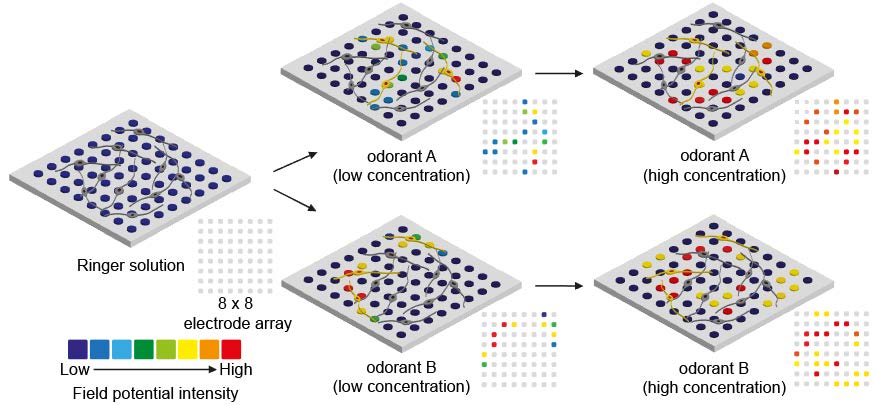Articles
Article Tools
Stats or Metrics
Article
Original Article
Exp Neurobiol 2018; 27(6): 574-592
Published online December 28, 2018
https://doi.org/10.5607/en.2018.27.6.574
© The Korean Society for Brain and Neural Sciences
Spheroid Culture of Mammalian Olfactory Receptor Neurons: Potential Applications for a Bioelectronic Nose
Samhwan Kim1, So Yeun Kim1,2, Seong-Kyun Choi3, Jisub Bae1, Won Bae Jeon4, Jae Eun Jang5, and Cheil Moon1,2*
1Department of Brain and Cognitive Sciences, Daegu Gyeongbuk Institute of Science and Technology, Daegu 42988, Korea.
2Convergence Research Advanced Centre for Olfaction, Daegu Gyeongbuk Institute of Science and Technology, Daegu 42988, Korea.
3Core Protein Resources Center, Daegu Gyeongbuk Institute of Science and Technology, Daegu 42988, Korea.
4Companion Diagnostics and Medical Technology Research Group, Daegu Gyeongbuk Institute of Science and Technology, Daegu 42988, Korea.
5Department of Information and Communication Engineering, Daegu Gyeongbuk Institute of Science and Technology, Daegu 42988, Korea.
Correspondence to: *To whom correspondence should be addressed.
TEL: 82-53-785-6110, FAX: 82-53-785-6109
e-mail: cmoon@dgist.ac.kr
Abstract
The olfactory system can detect many odorants with high sensitivity and selectivity based on the expression of nearly a thousand types of olfactory receptors (ORs) in olfactory receptor neurons (ORNs). These ORs have a dynamic odorant detection range and contribute to signal encoding processes in the olfactory bulb (OB). To harness the capabilities of the olfactory system and develop a biomimetic sensor, stable culture and maintenance of ORNs are required. However,
Graphical Abstract

Keywords: Cell-based biosensor, Recombinant protein, Olfactory receptor neuron, Spheroid culture, Micro electrode array


